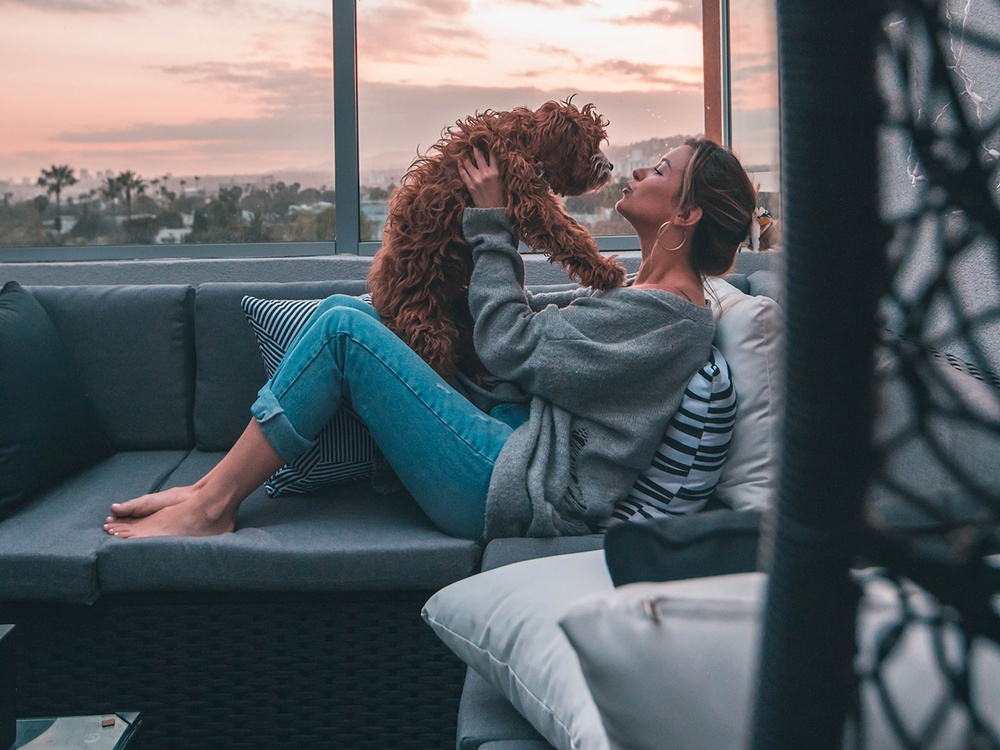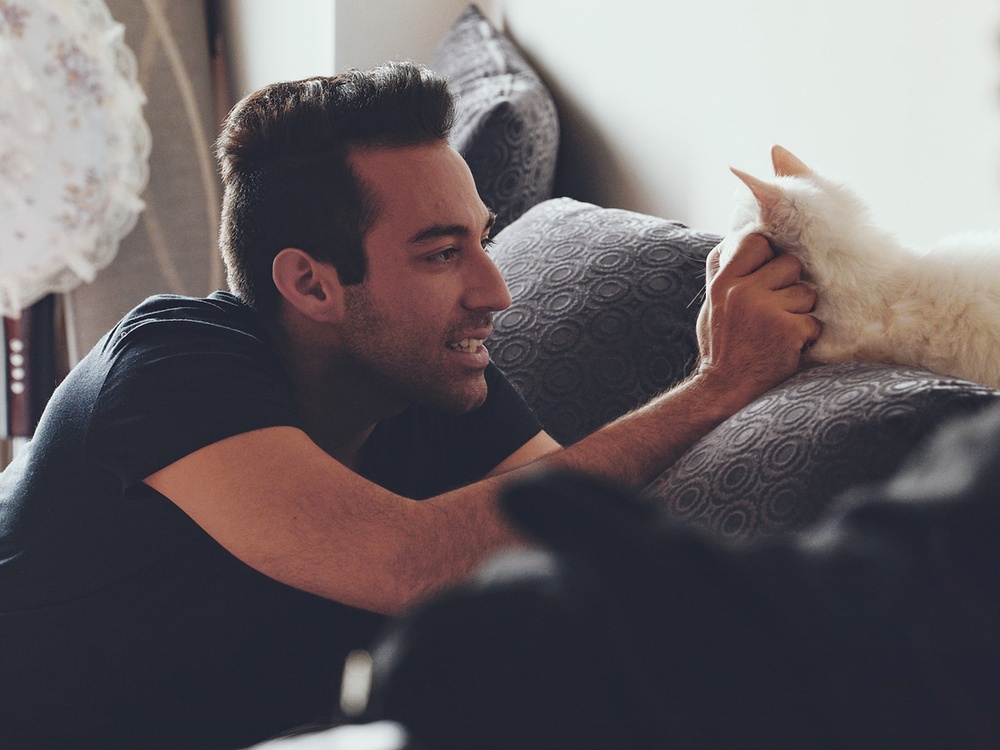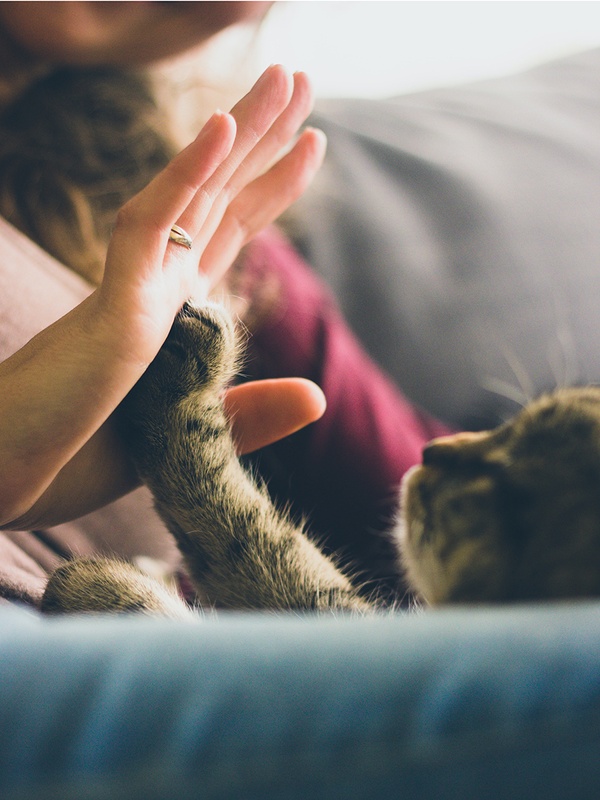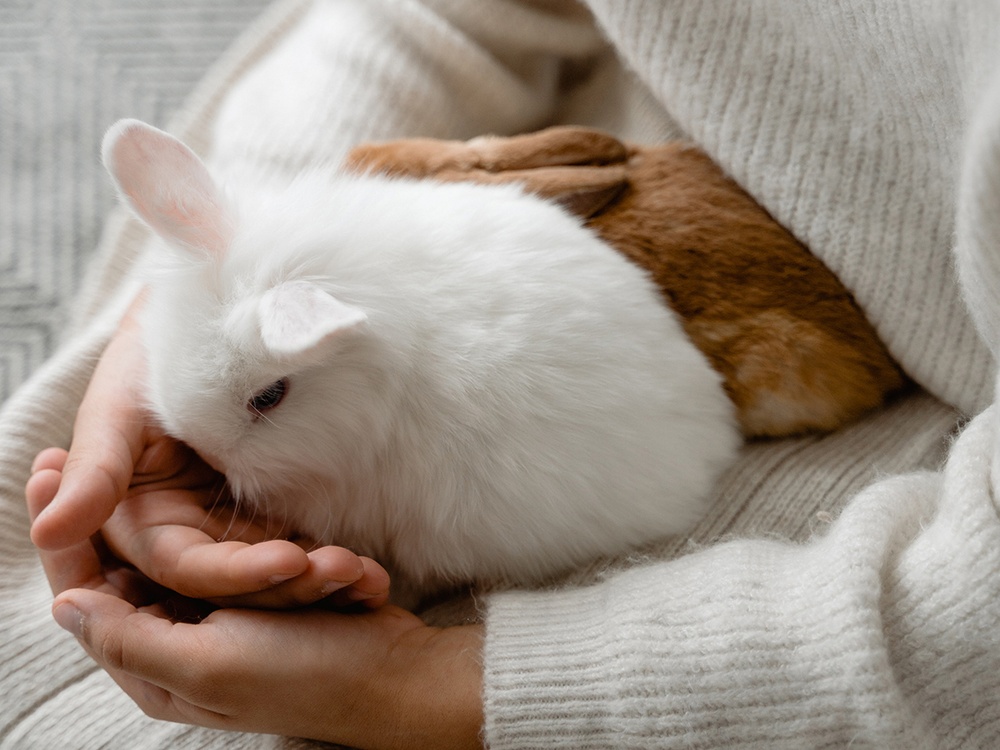How To Leave Your Cat Or Dog With A Pet Sitter
Travel is one of the great joys of life but leaving your pets in the care of someone else, even a professional pet sitter, can cause some anxiety for you and your pet. Luckily, a bit of planning and preparation can make your trip easier on your pet, your pet sitter, and your peace of mind.
Help your pet get the best possible care by choosing a great pet sitter, preparing your home, and creating a pet sitter checklist.
What Does A Pet Sitter Do?
A pet sitter is a person who professionally cares for pets while their owners are away, often on vacations or extended work trips. They provide the daily care that our pets need from feeding to walking to companionship.
Pet sitters can be in-home pet sitters (doubling as a house sitter) or check-in sitters. Dogs typically benefit from an in-home dog sitter while more aloof felines may prefer a check-in cat sitter.
Pet sitters are an ideal solution for multiple-pet families, pets with special needs or medical needs, and pets who would prefer to stay in their familiar home rather than a pet boarding option. Pet sitters often offer daily check-ins with pet parents, updating them on any happenings or just sending a cute photo or two.
How To Choose A Pet Sitter
When choosing a pet sitter, consider an in-person interview in your home before hiring. You can get to know them personally and ask questions about their experience and methods of caring for your pet.
- What are their pet sitter rates and are there any additional fees?
- What is their experience in pet sitting (including past client references)?
- What are their personal training and handling methods?
- Do they have a business license?
- Is the business insured and bonded?
- Do they have an agreement or contract?
- What happens if they are unavailable to care for your pets?
- Do they have training in pet CPR or first aid?
- How would they handle a pet emergency?
- When would they contact an emergency veterinary hospital?
When Should I Bring My Pet To The Emergency Vet?
By having an interview in your home the potential pet sitter has the opportunity to meet your pets and ask any questions they may have about your specific pets. You will have the opportunity to see how the person interacts with your pet and if your pet acclimates to them easily or not.
Before working with a new pet sitter, check out their references. You are trusting this person with the care of your home and your furry family members.
How to Find a Pet Sitter
A way to find a great pet sitter is to ask your friends and family if they have a recommendation. Your primary veterinarian or groomer may also be a fantastic resource for finding a pet sitter that your pets will love. You can also use online directories like Rover to find and schedule a pet sitter.
How To Prepare For A Pet Sitter
Make a pet-sitting checklist for yourself, including the following:
Supplies:
Place your pet’s extra food in an obvious location and label food containers. Leave clear feeding instructions. Place leashes, waste bags, litter scoop, and other essential items in an easily accessible place (out of reach of unattended pets). Set out extra food and water for your pet.
Security:
Double-check that all gates and other escape routes are secured. Consider leaving a spare key in a hidden spot outside or with a neighbor. Update your pets’ microchip information. If they become lost, they can more easily be returned home.
Safety:
Set out toys that your pet can safely play with unsupervised. Put away any toys that could become dangerous (like a half-chewed bully stick that could become a choking hazard or a string toy that could get wrapped around your cat).
Do a walk-through of your home from your pet’s point of view and remove any potentially hazardous item out of your pet’s reach. Empty the trash bin, put cleaning supplies and medications in cabinets, and place plants in a room with a closed door. A bored pet may investigate new ways to entertain themselves while you’re away.
Medications:
If your pet takes regular medication, double-check that you have enough to last through your trip. Leave all medications in their original containers for safety. Create a medication administration schedule for your pet sitter.
Comfort:
Close off any rooms or areas of your home that you don’t want your pet to access while you’re away. Note these pet-free areas in your pet sitter notes.
Leave a worn shirt in your pet's favorite hang-out spot (as long as you’re sure they won’t chew it). Your scent will help them with any separation anxiety.
If Your Pet Sitter Will Be Staying In Your Home
Provide clean linens, and stock up on basics like toilet paper. Be clear about where you prefer the sitter to sleep and if any foods are off-limits in the house. If you want to be moved to the favorites list, pick up some snacks specifically for your pet sitter. Give basic info on how to work the basics of your home: the wifi password, how to work your TV and HVAC system, etc.
Make note of where your pets typically sleep when people are in the house. Make it clear whether you are comfortable having other guests in your home or not.
If Your Pet Sitter Will Be Doing Daily Check-Ins
Be sure your sitter is clear on your expectations for the duration of scheduled visits. Be detailed on feeding and play/walking schedules and especially any medication information. Ask your sitter to send you a text or photo when checking in on your pet.
Make A Pet Sitter Checklist Guide
Make a pet sitter checklist guide for your cat or dog sitter to reference. You can make this guide once and edit it if needed for future needs. Start with the necessary information your pet sitter may need.
Basics:
If you have multiple pets, list a quick description or include a photo of each pet with their name so the pet sitter can identify them. Add in personality info here too. Like “Pepper is a snuggler and will curl up on your lap for hours'' or “Sugar loves to have her ears rubbed but hates being picked up”. These little details can elevate your pet and pet sitter experience together.
Contact Info:
Give your pet sitter multiple ways to contact you, aside from your cell number. Include the names and phone numbers of the places you're staying.
The contact information of at least one backup person that your pet sitter can contact to make decisions if they can’t reach you. (Talk to your backup person before you leave to confirm your preferences.)
Healthcare:
Contact information (including name, phone number, and address) of your primary veterinarian’s office and your closest 24/7 emergency veterinary clinic. This is also a great place to list the ASPCA Poison Control Hotline (888-426-4435) and The Pet Poison Helpline (855-764-7661).
Add copies of your pet’s medical records, copies of their most recent vaccination records, and microchip registration info. Or you can share your pet’s medical record app info. Virtual pet medical record apps like VitusVet allow sharing.
How To Prepare For An Emergency Vet Visit
Include the location of your pet's carrier and first aid kit in case of an emergency.
Include guidance on what veterinary care your pet can receive if you can’t be reached. In the case of a visit to a pet emergency room, do you have a spending cap? Lastly, include a simple letter to your veterinarian authorizing the pet sitter to bring your pets in for care. If you have pet insurance, add that information as well.
Medications:
If your pet takes any medicine, write out detailed step-by-step instructions for medication administration and the location of the medication. If your pet is difficult to medicate, include any tips or tricks that work for them.
Food And Water:
Note any pet and human food allergies, the main brand of food, a backup brand, and where the pet sitter can buy additional food if needed. Include detailed feeding instructions: portion sizes, time of feeding, different diets for different pets, etc.
Specific water instructions like "use the filtered water only, the tap is softened water’ or ‘the cat water fountain needs to be topped off every other day"
If your pet enjoys treats, leave info on quantity and when treats are given. An example would be “Sadie gets a cookie at bedtime when she goes in her crate for the night”. You can also include any tricks or words your pet knows. This is a great way for your pet sitter to connect with your pet.
Home Info:
Include any relevant info about your home. Things like alarm codes, the location of the utilities shut off. If you have a landlord, include their name and phone number. It’s also a great idea to let them know you have a pet sitter and give them the sitter’s contact info in case of an emergency.
Training Cues:
Especially if you are working with a dog sitter, listing out the phrases or cues your pet knows can make the process easier for your pet and sitter. Include your recall word at a minimum.
Outdoor Activities:
Give information on if you would like your dog kept in the yard for potty breaks or if you have a typical walking route you would like maintained. Include any notes about if your dog is reactive to other dogs or other relevant information.
In Case of Lost Pet:
No one wants to think about their pet being lost, but if it does happen what steps would you like your pet sitter to take? List them in order and include any helpful information, like “Ginger is a master of escaping out the front door. She usually runs under the bushes and can be lured back inside by shaking her treat container.”
Unique Concerns:
If your pet is an escape artist or has thunderstorm anxiety, make note of it with ideal solutions or processes to accommodate your pet’s unique concerns. If you are going away for the holidays, give information on common pet holiday hazards.
Daily Tasks Checklist:
This can help your sitter keep track of the daily care tasks, and provide the best care for your pet. Include typical feeding and walking/play times, medication schedules, and brushing expectations.
Leaving Your Pet With A Pet Sitter
Pet sitting allows you and your pets to be as comfortable as possible while you’re away.
With some planning and preparation, you can get the best care for your pet by choosing a great pet sitter, preparing your home, and creating a pet sitter checklist. Professional pet sitters are pet lovers who understand how much you love your pets and will care for them as their own.
Fact checked by Veterinarian

Dr. Paula Simons is an Emergency and Critical Care veterinary resident on her way to becoming a veterinary criticalist. She is originally from Philadelphia, Pennsylvania, and completed her veterinary training in Ontario, Canada, at Ontario Veterinary College. Dr. Paula Simons has a particular interest in critical care nutrition, trauma, and pain management. She enjoys the management of surgical patients and troubleshooting complex cases. Additionally, she is a huge advocate for her patients and ensuring their comfort. She has two cats named Moo and Kal, whom she loves dearly. More About Us













